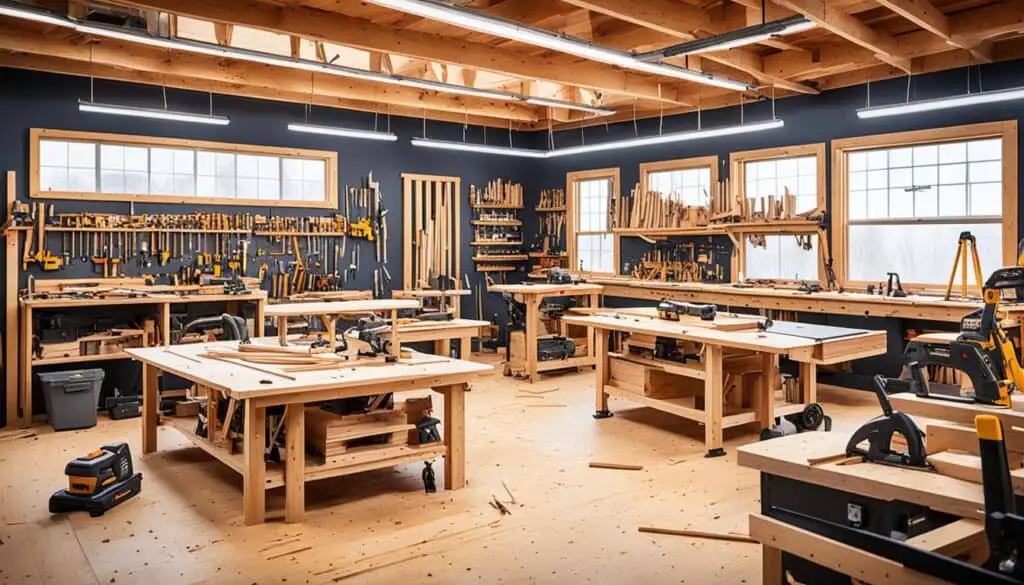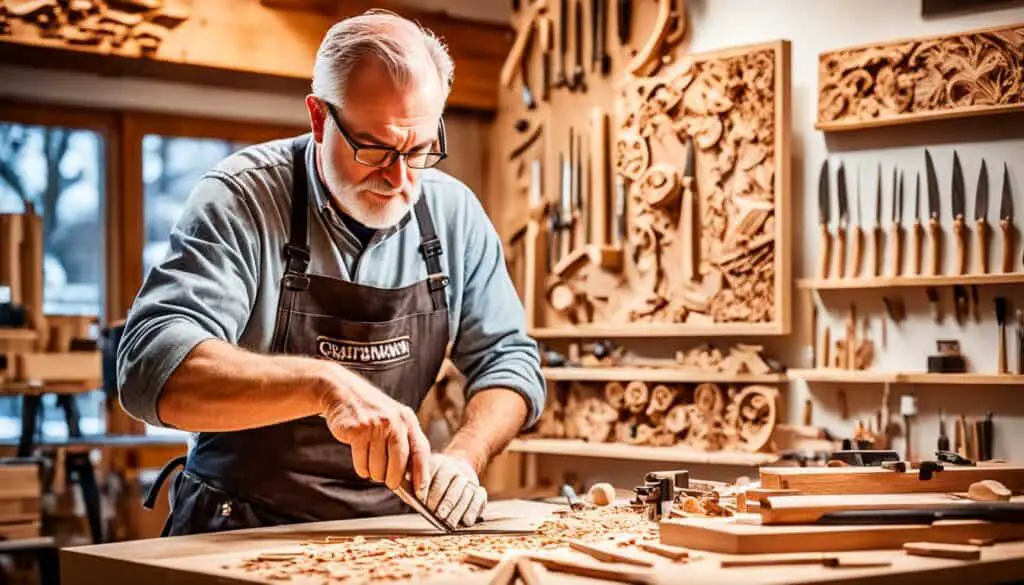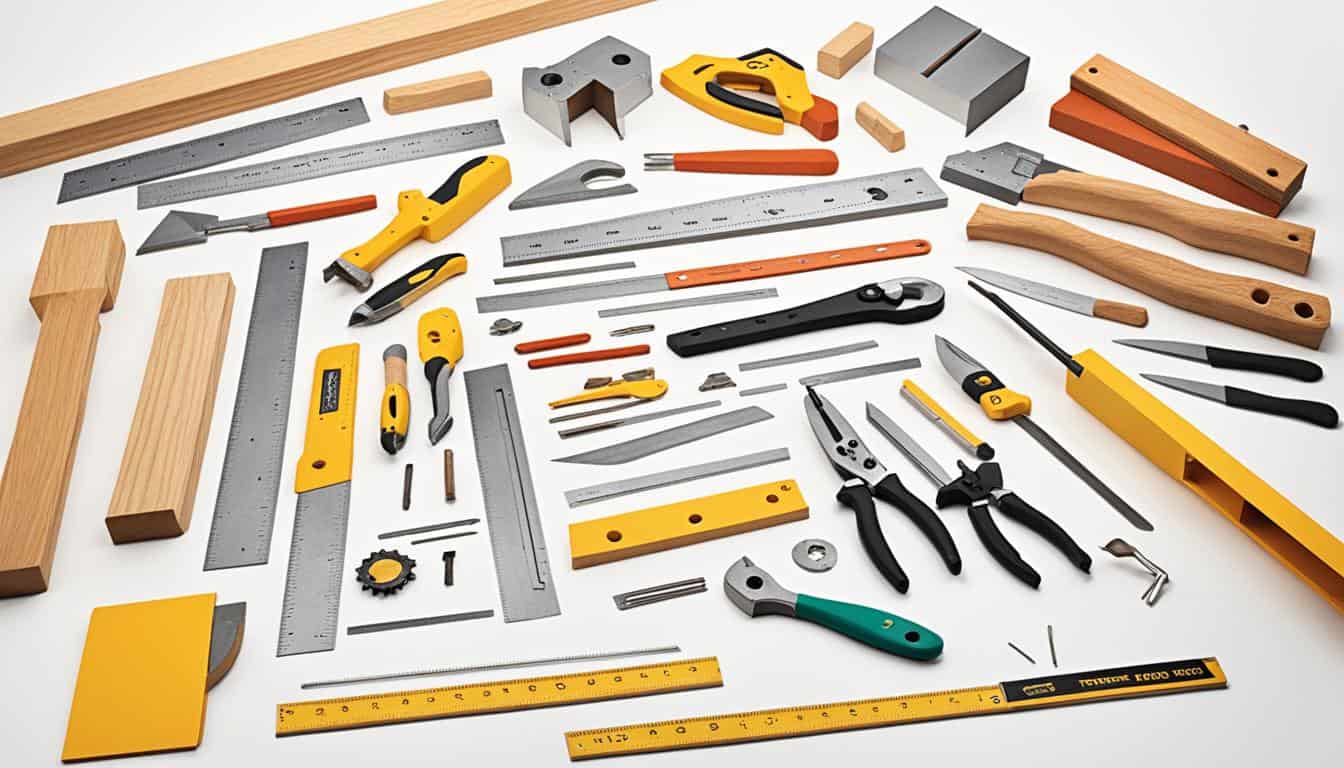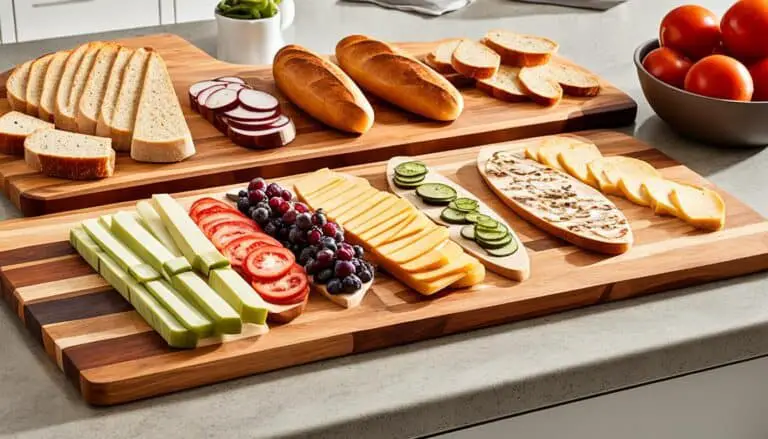Carpentry and woodworking are two skilled trades that involve working with wood, but they have distinct differences. Understanding these key distinctions is essential for anyone interested in pursuing a career in either field or simply wanting to appreciate the unique aspects of each craft. In this article, we will explore the basics of carpentry and woodworking, their historical evolution, the tools and materials used, the different types of projects undertaken, the required skillsets, the role of precision, work environments, educational paths, their impact on business and industry, as hobbies, and their cultural significance. By the end, you’ll have a comprehensive understanding of what sets carpentry and woodworking apart.
Key Takeaways:
- Carpentry focuses on constructing structures, while woodworking leans more towards creating fine furniture and artistic pieces.
- Carpentry and woodworking require different skillsets and tools tailored to their respective tasks.
- Carpenters primarily work on large-scale projects in construction, while woodworkers focus on smaller-scale projects with intricate details.
- Precision is crucial in both carpentry and woodworking, but in different aspects – functionality for carpentry and aesthetics for woodworking.
- Carpentry serves the construction industry, while woodworking caters to a broader market, including furniture manufacturing and artistic crafts.
Understanding the Basics of Carpentry and Woodworking
Before delving into the distinctions between carpentry and woodworking, it’s essential to grasp the fundamental concepts of each trade. Carpentry primarily focuses on constructing structures and involves tasks such as framing, roofing, and finishing. On the other hand, woodworking leans more towards creating fine furniture, decorative objects, and artistic pieces through techniques like carving, joinery, and finishing. Both carpentry and woodworking require knowledge of working with wood, but their specific areas of expertise differ.
To get a better understanding, let’s take a closer look at the basics of both carpentry and woodworking.
Carpentry Basics:
Carpentry is the trade of building and repairing structures using wood as the primary material. Carpenters work on various construction projects, including houses, commercial buildings, and infrastructure. They have expertise in tasks such as measuring, cutting, fitting, and assembling structural elements. Carpenters utilize tools like hammers, saws, drills, and measuring devices to carry out their work. The precision and accuracy of carpentry are crucial for constructing safe and durable buildings.
Woodworking Basics:
Woodworking is the craft of creating functional and artistic pieces using wood. Woodworkers focus on shaping, joining, and finishing wood to produce furniture, decorative objects, and sculptures. They employ techniques like carving, joinery, and fine finishing to bring their designs to life. Woodworkers typically work with specialized tools such as chisels, planes, routers, and spindle sanders to achieve precision and detail in their creations.
Understanding the basics of carpentry and woodworking is the foundation for further exploration into these trades. Now that you have a clear idea of the distinct aspects of each craft, we can delve deeper into their historical evolution and the tools and materials used in the upcoming sections.
Historical Evolution of Carpentry and Woodworking
Carpentry and woodworking have a long and fascinating history that spans centuries. Understanding the historical evolution of these trades provides valuable insights into their development and significance in today’s world.
Roots of Carpentry in Construction
Carpentry has its roots in construction, where skilled individuals have been working with wood to build structures for thousands of years. From ancient civilizations to modern times, carpenters have played a crucial role in shaping our built environment. They have used their expertise to craft and assemble wooden components, contributing to the construction of houses, bridges, temples, and other architectural marvels.
The Artistic Emergence of Woodworking
Woodworking, on the other hand, emerged as a distinct art form and craft. Throughout history, artisans have transformed wood into intricate designs, sculptures, and functional objects. Woodworkers have honed their skills in carving, joinery, and finishing to create unique and captivating works of art. From ornate furniture to delicate wooden sculptures, woodworking has evolved into a form of creative expression, showcasing the beauty and versatility of wood.
The Tools of the Trade: Carpentry vs Woodworking
Essential Carpentry Tools for Building Structures
Carpentry requires a diverse range of tools that are essential for constructing and installing structural components. These tools, designed to withstand the demands of building, provide carpenters with the precision and power needed to complete their projects efficiently. Some of the essential carpentry tools include:
- Hammers: Used to drive nails and secure fasteners.
- Saws: Types of saws commonly used in carpentry include circular saws, reciprocating saws, and hand saws.
- Drills: Essential for drilling holes and installing screws or other fasteners.
- Measuring Devices: Including tape measures, squares, and levels to ensure accurate dimensions and alignments.
These tools enable carpenters to measure, cut, assemble, and secure the various components needed to build sturdy structures.
Woodworking Tools for Detail and Precision
Woodworking, with its emphasis on crafting fine furniture and intricate details, requires a unique set of tools tailored to precision work. These tools allow woodworkers to shape, refine, and create stunning pieces of artistry. Some of the essential woodworking tools include:
- Chisels: Used for carving and shaping wood, creating intricate details and designs.
- Planes: Essential for smoothing surfaces and shaping wood by removing thin layers.
- Routers: Versatile tools used for creating decorative edges and joining pieces of wood.
- Spindle Sanders: Used to smoothen and shape curved surfaces, ensuring precise contours.
These specialized tools enable woodworkers to bring out the beauty and elegance of the wood, transforming it into functional and visually captivating pieces.
Materials Used by Carpenters and Woodworkers
Carpenters and woodworkers work with different types of materials to achieve their desired outcomes. The choice of materials greatly influences the final result and serves as a defining factor between carpentry and woodworking projects.
Common Lumber and Plywood in Carpentry
Carpenters commonly use lumber and plywood for building structures, where strength and durability are crucial. Lumber, also known as timber, is wood that has been processed into beams and planks, making it suitable for construction purposes. Carpenters often select different types of lumber, including softwoods like pine and fir, or hardwoods like oak and maple, based on the specific requirements of the project.
Plywood, on the other hand, is made by layering thin sheets of wood veneer and bonding them together with strong adhesives. It offers added strength and stability, making it widely used in flooring, roofing, and wall sheathing. The layered structure of plywood also helps prevent warping and provides versatility in terms of size and shape.
Both lumber and plywood are readily available and cost-effective materials that contribute to the structural integrity of carpentry projects.
Selection of Fine Woods for Woodworking
Woodworkers have the luxury of selecting fine woods to create elegant and visually appealing pieces. These fine woods, such as mahogany, walnut, cherry, and various exotic species, are prized for their beauty, natural grain patterns, and unique characteristics.
Woodworkers carefully select different types of wood based on factors like color, texture, hardness, and workability. For example, mahogany is known for its rich reddish-brown color and stability, while walnut showcases deep brown tones and distinctive grain patterns. Cherry wood offers a warm reddish hue and develops a beautiful patina over time.
Working with fine woods allows woodworkers to create intricate details, carve delicate designs, and achieve a refined finish. The selection of high-quality materials enhances the craftsmanship and aesthetic value of woodworking projects.
Professional Paths: Carpenter vs Woodworker
Choosing a professional path in carpentry or woodworking involves considering various factors such as personal interests, skillsets, and career goals. Carpenters typically find employment in construction companies or may become self-employed, focusing on building structures. Woodworkers have the option of pursuing careers as furniture makers, cabinetmakers, or artisans, working in woodworking studios, or starting their own businesses. Understanding the different career trajectories can help individuals make informed decisions about their professional journeys.
When it comes to a carpenter career, there are several options to explore. Carpenters can find employment in construction companies, where they contribute to building houses, commercial buildings, or infrastructure projects. They play a critical role in the construction process, utilizing their skills in framing, roofing, and finishing. Carpenters can also specialize in certain areas such as trim carpentry or cabinet installation, allowing them to focus on specific aspects of construction. Some carpenters choose to become self-employed, taking on projects independently and managing their own businesses.
On the other hand, a woodworker career offers a range of possibilities in the realm of furniture making and craftsmanship. Woodworkers can find employment in furniture manufacturing companies, where they create beautiful and functional pieces of furniture. They may specialize in specific types of furniture, such as chairs, cabinets, or tables. Woodworkers also have the opportunity to work as cabinetmakers, designing and building custom cabinets for residential or commercial spaces. Additionally, woodworkers can venture into the realm of artistry, creating unique sculptural pieces, decorative objects, or wooden instruments.
Woodworkers often work in woodworking studios equipped with specialized tools and machinery to facilitate their creative process. Some may even choose to establish their own woodworking businesses, selling their handcrafted pieces or offering custom-made furniture and woodworking services. Others may pursue freelance opportunities, collaborating with interior designers or artists to bring their creative visions to life.
Both carpentry and woodworking offer fulfilling career paths, allowing individuals to work with their hands and create tangible objects. Whether you choose to pursue a career as a carpenter or a woodworker, the skills you acquire and the projects you undertake will contribute to the rich heritage of craftsmanship and woodworking traditions.
Types of Projects: What Separates Carpentry from Woodworking
The types of projects undertaken in carpentry and woodworking vary significantly, highlighting the distinctions between the two trades. Carpenters typically work on large-scale projects involving the construction of houses, commercial buildings, and infrastructure. Woodworkers, on the other hand, focus on smaller-scale projects, creating furniture pieces, decorative objects, and artistic sculptures. The scale and purpose of the projects differentiate carpentry from woodworking.
While carpenters take on projects that involve building structures such as houses, offices, and bridges, woodworkers specialize in creating intricate and detailed wooden furniture, ornamental objects, and artistic sculptures. Carpenters use their skills to construct and assemble structural components of buildings, ensuring stability and durability. On the other hand, woodworkers use precise techniques like carving, joinery, and finishing to transform raw wood into beautiful and functional pieces.
The types of projects in carpentry and woodworking are distinct, with carpenters focusing on large-scale construction projects, and woodworkers specializing in smaller-scale furniture and artistic creations.
Carpentry Projects
| Types of Carpentry Projects | Description |
|---|---|
| Residential Construction | Building houses, including framing, roofing, and finishing. |
| Commercial Construction | Constructing offices, retail spaces, and other commercial buildings. |
| Infrastructure | Working on bridges, highways, and other large-scale infrastructure projects. |
Woodworking Projects
| Types of Woodworking Projects | Description |
|---|---|
| Furniture Making | Creating custom wooden furniture pieces for residential and commercial use. |
| Decorative Objects | Designing and crafting ornamental wooden objects for aesthetic purposes. |
| Artistic Sculptures | Using wood as a medium to create intricate sculptures and artistic expressions. |
The types of projects in carpentry and woodworking reflect the varied goals and applications of each trade. Carpenters contribute to the construction of functional and structurally sound buildings, while woodworkers add beauty and artistry to furniture, decorative objects, and sculptures.
The Difference Between Carpentry and Woodworking
While both carpentry and woodworking involve working with wood, they have distinct differences in focus and application. Carpentry primarily focuses on constructing structures with an emphasis on functionality and durability. Woodworking, on the other hand, emphasizes the artistic aspects of working with wood and involves creating aesthetic pieces with intricate details. Understanding this difference is essential for anyone interested in engaging with or appreciating these crafts.
Whether you’re considering a career in carpentry or woodworking, or simply want to better understand the crafts, it’s important to recognize the unique characteristics of each.
Carpentry:
- Focuses on building and constructing structures
- Emphasizes functionality and durability
- Involves tasks such as framing, roofing, and finishing
- Requires knowledge of construction techniques and materials
- Utilizes a variety of tools such as hammers, saws, drills, and measuring devices
Woodworking:
- Focuses on creating fine furniture, decorative objects, and artistic pieces
- Emphasizes artistic expression and attention to detail
- Involves techniques such as carving, joinery, and finishing
- Requires knowledge of woodworking techniques and materials
- Utilizes specialized tools such as chisels, planes, routers, and spindle sanders
By understanding the core differences between carpentry and woodworking, you can gain a deeper appreciation for the unique qualities and craftsmanship that each trade offers.
Carpentry and Woodworking Comparison in Terms of Skillset
In the world of woodworking and carpentry, both trades require distinct skillsets that highlight the unique techniques and approaches employed in each craft. Carpenters possess a set of skills focused on accuracy, safety, and structural integrity, while woodworkers excel in techniques that emphasize craftsmanship, detailing, and refinement. Mastering these specific skillsets is crucial for success in carpentry or woodworking.
Carpentry Skills: Measuring, Cutting, and Assembling
In carpentry, precision and accuracy are paramount. Carpenters must possess strong skills in measuring, cutting, and assembling wood components to ensure the construction of structures that are both safe and sound. They use tools such as tape measures, saws, and drills to carefully measure and cut each piece of wood to the required specifications. Attention to detail and the ability to interpret blueprints and plans are essential in executing carpentry projects accurately.
Woodworking Skills: Carving, Joinery, and Finishing
Woodworkers, on the other hand, rely on a different set of skills to create intricate and visually stunning pieces. Woodworking skills include carving, joinery, and finishing techniques. Woodworkers must have the ability to shape and sculpt wood through carving, bringing out the desired forms and textures. Joinery skills involve connecting wood pieces together with precision and strength, using techniques such as mortise and tenon or dovetail joints. Finally, woodworking requires a keen eye for detail in finishing, including sanding, staining, and applying protective coatings to achieve the desired aesthetic and durability.
To better visualize the comparison between carpentry and woodworking skills, refer to the table below:
| Carpentry Skills | Woodworking Skills |
|---|---|
| Measuring | Carving |
| Cutting | Joinery |
| Assembling | Finishing |
Note: The table above provides a concise comparison of the key skills employed in carpentry and woodworking. It serves as a reference to highlight the differences between the two crafts.
Understanding the Role of Precision in Carpentry and Woodworking
Precision is an essential aspect of both carpentry and woodworking, playing a crucial role in achieving high-quality results. Although the focus of precision differs between these two trades, it remains paramount for successful outcomes.
In carpentry, precision plays a critical role in ensuring accurate measurements and cuts. Carpenters must meticulously calculate and mark dimensions to create structurally sound and reliable structures. By adhering to precise measurements and employing accurate cutting techniques, carpenters can guarantee stability, functionality, and safety in their construction projects.
On the other hand, precision in woodworking primarily revolves around the details and fine craftsmanship. Woodworkers emphasize accuracy when working on intricate designs and aesthetic pieces. Every cut, joint, and finish requires precision to achieve the desired visual appeal and achieve a polished result. Woodworkers meticulously measure, shape, and refine pieces of wood, paying close attention to detail to create aesthetically pleasing and meticulously crafted objects of art.
The importance of precision in both carpentry and woodworking cannot be overstated. Whether it is constructing a sturdy structure or creating a visually stunning piece, precision ensures the integrity and quality of the final product. By prioritizing precision in their work, practitioners in both trades can take pride in producing exceptional and masterful creations.
Work Environments: Workshops, Job Sites, and Studios
Carpenters primarily work in carpentry workshops, which serve as a hub for construction activities. These workshops are equipped with specialized tools, machinery, and workstations to fabricate various components required for construction projects. Carpenters use these workshops to prepare and assemble structural elements such as walls, doors, windows, and frames before transporting them to the job sites. The carpentry workshop provides a controlled and organized environment that allows carpenters to work efficiently and ensures the quality and accuracy of the structural elements.

The Woodworking Studio: A Creative Space
Woodworkers, on the other hand, typically work in dedicated woodworking studios. These studios are designed to provide a creative and focused environment for woodworking projects. Equipped with a variety of specialized tools, such as chisels, planes, routers, and spindle sanders, woodworking studios enable woodworkers to shape, carve, and refine wood with precision and artistry. The studios are also well-lit and ventilated, creating an ideal space for inspiration and craftsmanship. Woodworkers often spend long hours in their studios, meticulously crafting furniture pieces, decorative objects, and artistic sculptures.
| Carpentry Workshop | Woodworking Studio | |
|---|---|---|
| Primary Purpose | Serves as a hub for construction | Provides a creative space for woodworking projects |
| Tools and Machinery | Specialized tools for structural assembly | Tools for shaping, carving, and finishing wood |
| Work Environment | Controlled and organized | Creative and focused |
| Projects | Construction components | Furniture, decorative objects, sculptures |
In summary, carpenters work in carpentry workshops, where they fabricate structural components for construction projects. These workshops provide a controlled environment for assembly and ensure the quality of the structural elements. Woodworkers, on the other hand, work in woodworking studios, where they have the freedom to unleash their creativity and craft intricate pieces. Understanding the different work environments helps to appreciate the unique aspects of carpentry and woodworking practices.
Educational Paths for Aspiring Carpenters and Woodworkers
For those interested in pursuing a career in carpentry or woodworking, there are various educational paths available to develop the necessary skills and knowledge. Whether you aspire to become a skilled carpenter or a talented woodworker, obtaining the right education can set you on the path to success.
Carpentry Certifications and Apprenticeships
One option for aspiring carpenters is to pursue certifications from vocational schools that offer carpentry programs. These certifications provide a solid foundation of theoretical knowledge and practical skills necessary for the carpentry trade. Additionally, some vocational schools may offer hands-on apprenticeship programs where aspiring carpenters can learn from experienced professionals in a real-world work environment. Apprenticeships provide valuable opportunities to gain firsthand experience, refine skills, and develop industry connections.
Woodworking Courses and Craftsmanship Training
For individuals interested in woodworking, specialized courses in woodworking can provide in-depth knowledge and hands-on training. Woodworking courses are typically offered by trade schools, community colleges, and woodworking studios. These courses cover various aspects of woodworking, from basic techniques to advanced skills, and may include topics such as joinery, carving, furniture making, and finishing. Craftsmanship training programs are another option for aspiring woodworkers, allowing them to learn from experienced craftsmen who have honed their skills over years of practice. These programs focus on developing the mastery of woodworking techniques and the ability to create finely crafted pieces of art.
To choose the most suitable educational path, aspiring carpenters and woodworkers should consider their career goals, preferred learning style, and available resources. By investing in the right education, aspiring professionals can enhance their skills and knowledge, giving them a competitive edge in the carpentry and woodworking industries.
Distinction Carpentry Woodworking in Business and Industry
Carpentry and woodworking play distinct roles in the business and industry sectors. Carpentry primarily serves the construction industry, where carpenters contribute to building and renovating structures. Woodworking, on the other hand, caters to a broader market that includes furniture manufacturing, interior design, and artistic crafts. Recognizing their unique contributions in business and industry helps individuals understand the opportunities and markets associated with each trade.
Carpentry and Woodworking as Hobbies
Carpentry and woodworking offer rewarding hobbies that allow you to explore your creativity and work with your hands. Whether you have experience in the trades or are completely new to woodworking, these hobbies provide a fulfilling and productive outlet for your skills and imagination.
The Joy of Carpentry: Weekend Projects
Carpentry as a hobby allows you to engage in weekend projects and create practical structures or furniture pieces for personal use. From building a sturdy bookshelf to constructing a cozy outdoor bench, carpentry projects provide a sense of accomplishment and the opportunity to enhance your living space with custom-made items. Whether you’re a beginner or more experienced, carpentry projects can be tailored to your skill level, allowing you to learn and grow while enjoying the process.
Woodworking: From Passion Projects to Artisanal Crafts
Woodworking as a hobby offers the chance to transform your passion into artisanal crafts. With woodworking, you can create unique decorative items and functional objects that showcase your personal style and woodworking skills. From carving intricate designs on wooden picture frames to handcrafting exquisite wooden bowls, the possibilities are endless. Woodworking allows you to experiment with different wood types, finishes, and techniques to bring your artistic vision to life. Whether you choose to create small decorative items or larger furniture pieces, woodworking as a hobby allows you to immerse yourself in the artistry of working with wood.
| Carpentry as a Hobby | Woodworking as a Hobby |
|---|---|
| Focuses on constructing structures and furniture pieces for personal use | Emphasizes creating decorative items and functional objects with artistic flair |
| Allows for practical application of carpentry skills and techniques | Enables the expression of creativity and artistic talent through woodworking |
| Provides the opportunity to enhance your living space with custom-made items | Allows you to create unique and personalized wooden crafts |
| Caters to those who enjoy hands-on construction and problem-solving | Suits individuals passionate about craftsmanship, design, and aesthetics |
The Cultural Impact of Carpentry and Woodworking
Carpentry and woodworking have a profound cultural impact, influencing various aspects of our society. These trades play vital roles in shaping the world of architecture, infrastructure, art, and design, showcasing the versatility and beauty of working with wood.
Carpentry in Architecture and Infrastructure
Carpentry is deeply ingrained in the construction industry, with carpenters contributing their expertise to the creation of buildings, bridges, and other structures. The skillful craftsmanship of carpenters ensures the structural integrity and functionality of these creations, as well as their overall aesthetic appeal. From the framing of a house to the intricate finishes of intricate trimwork, carpentry in architecture showcases the meticulous attention to detail and the ability to transform raw materials into extraordinary structures.
Woodworking in Art and Design
Woodworking is renowned for its contribution to artistic expressions and design. Woodworkers transform raw wood into exquisite sculptures, furniture, and decorative objects, captivating audiences with their craftsmanship and creativity. Whether it’s a beautifully carved wooden sculpture or a meticulously crafted piece of furniture, woodworking brings warmth, natural beauty, and a touch of artistry to various creative endeavors. The use of fine woods, intricate joinery techniques, and attention to detail in woodworking highlight the skill and dedication of the artisans.

Conclusion
In conclusion, carpentry and woodworking are two distinct trades that involve working with wood. While they may share similarities, their focuses and applications set them apart. Carpentry primarily revolves around constructing structures, such as buildings and infrastructure, whereas woodworking emphasizes creating functional and artistic pieces.
Understanding the differences in tools, materials, skillsets, and work environments is crucial for aspiring professionals or individuals interested in appreciating these crafts. Carpenters rely on tools like hammers, saws, and drills, while woodworkers utilize specialized tools such as chisels and routers. Carpenters commonly work with lumber and plywood, while woodworkers have the freedom to select fine woods that suit their creative vision.
Mastering the specific skillsets required in each trade is essential. Carpenters focus on skills like measuring, cutting, and assembling, ensuring precision in their construction projects. Woodworkers, on the other hand, excel in techniques such as carving, joinery, and finishing, which allow them to create intricate and refined pieces.
By recognizing the key distinctions between carpentry and woodworking, we can fully appreciate the unique contributions that both trades make to the world of craftsmanship and creativity. Whether you’re considering a career in one of these fields or simply have a passion for working with wood, understanding these differences will enhance your understanding and admiration of these timeless crafts.
FAQ
What is the difference between carpentry and woodworking?
Carpentry primarily focuses on constructing structures such as framing, roofing, and finishing, while woodworking leans more towards creating fine furniture, decorative objects, and artistic pieces through techniques like carving, joinery, and finishing.
How did carpentry and woodworking evolve historically?
Carpentry finds its roots in construction, where skilled individuals shaped and assembled wood to build structures. Woodworking, on the other hand, emerged as an art form and craft, where artisans created intricate designs and sculptures using various woodworking techniques.
What are the essential tools for carpentry and woodworking?
Carpenters rely on tools like hammers, saws, drills, and measuring devices to construct and install structural components, while woodworkers utilize specialized tools such as chisels, planes, routers, and spindle sanders to shape and refine wood with precision.
What materials are commonly used in carpentry and woodworking?
Carpenters commonly use lumber and plywood for building structures, while woodworkers have the luxury of selecting fine woods such as mahogany, walnut, and cherry to create elegant and visually appealing pieces.
What are the different types of projects carried out in carpentry and woodworking?
Carpenters typically work on large-scale projects involving the construction of houses, commercial buildings, and infrastructure, while woodworkers focus on smaller-scale projects, creating furniture pieces, decorative objects, and artistic sculptures.
What skills are required for carpentry and woodworking?
Carpenters need skills in measuring, cutting, and assembling to construct structures accurately and safely, while woodworkers require skills in carving, joinery, and finishing to create detailed and refined pieces.
How important is precision in carpentry and woodworking?
Precision plays a vital role in both trades but with different focuses. Carpenters must ensure precise measurements and cuts to create structurally sound and reliable structures, while woodworkers emphasize precision in detailing and fine craftsmanship to achieve aesthetically pleasing results.
What are the work environments for carpenters and woodworkers?
Carpenters typically work on job sites, constructing structures directly within the construction context, while woodworkers often have dedicated studios equipped with specialized tools and machinery that allow for a creative and focused work environment.
What are the educational paths for aspiring carpenters and woodworkers?
Aspiring carpenters can pursue certifications from vocational schools or apprenticeships under experienced professionals, while woodworkers can take specialized courses in woodworking or gain skills through craftsmanship training programs.
How do carpentry and woodworking contribute to the business and industry sectors?
Carpentry primarily serves the construction industry, whereas woodworking caters to a broader market that includes furniture manufacturing, interior design, and artistic crafts.
Can carpentry and woodworking be pursued as hobbies?
Both carpentry and woodworking offer rewarding hobbies for individuals to explore their creativity and work with their hands. Carpenters can engage in weekend projects, from building basic structures to constructing furniture pieces, while woodworking enthusiasts can transform their passion into artisanal crafts.
What is the cultural impact of carpentry and woodworking?
Carpentry plays a crucial role in the construction of buildings and infrastructure, influencing the overall aesthetic and functionality. Woodworking contributes to artistic expressions, adding beauty and craftsmanship to various creative endeavors in art, design, and beyond.
Conclusion
Carpentry and woodworking may share similarities in working with wood, but their distinct focuses and applications set them apart. Understanding the differences in tools, materials, skillsets, and work environments provides valuable insights for aspiring professionals or individuals interested in appreciating these crafts.












